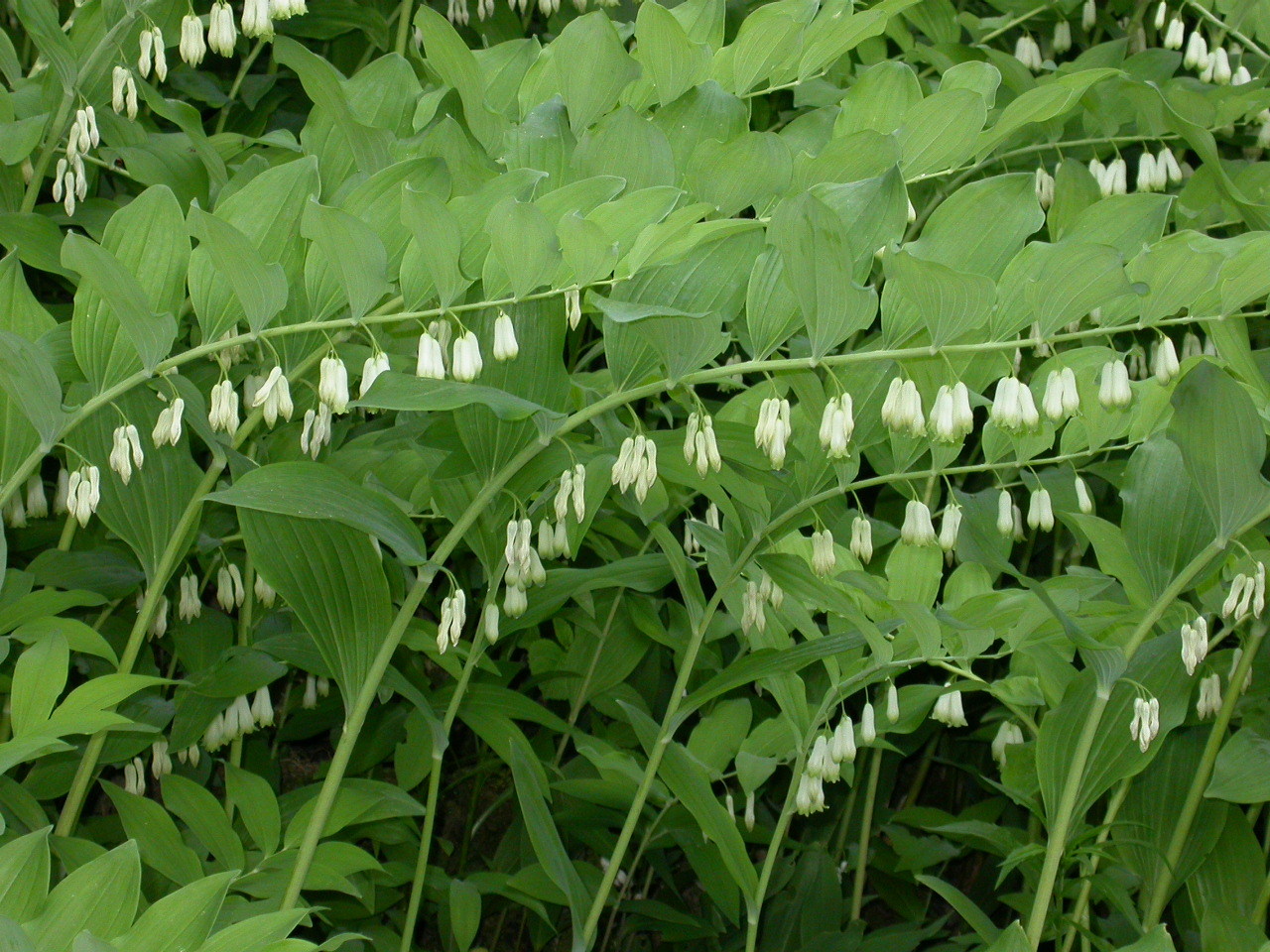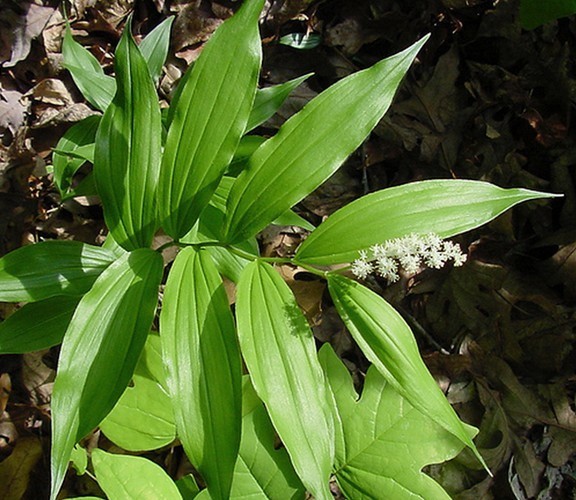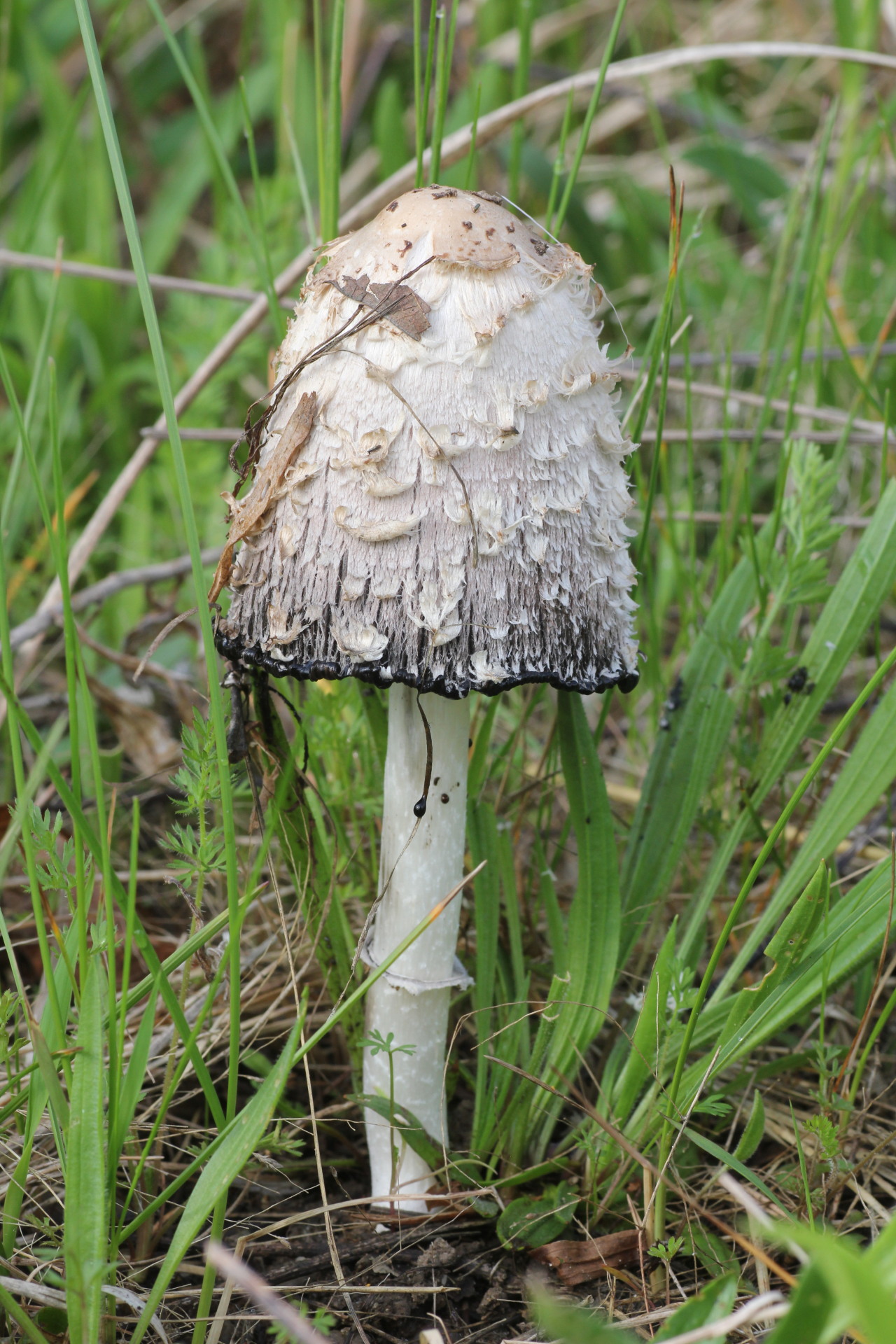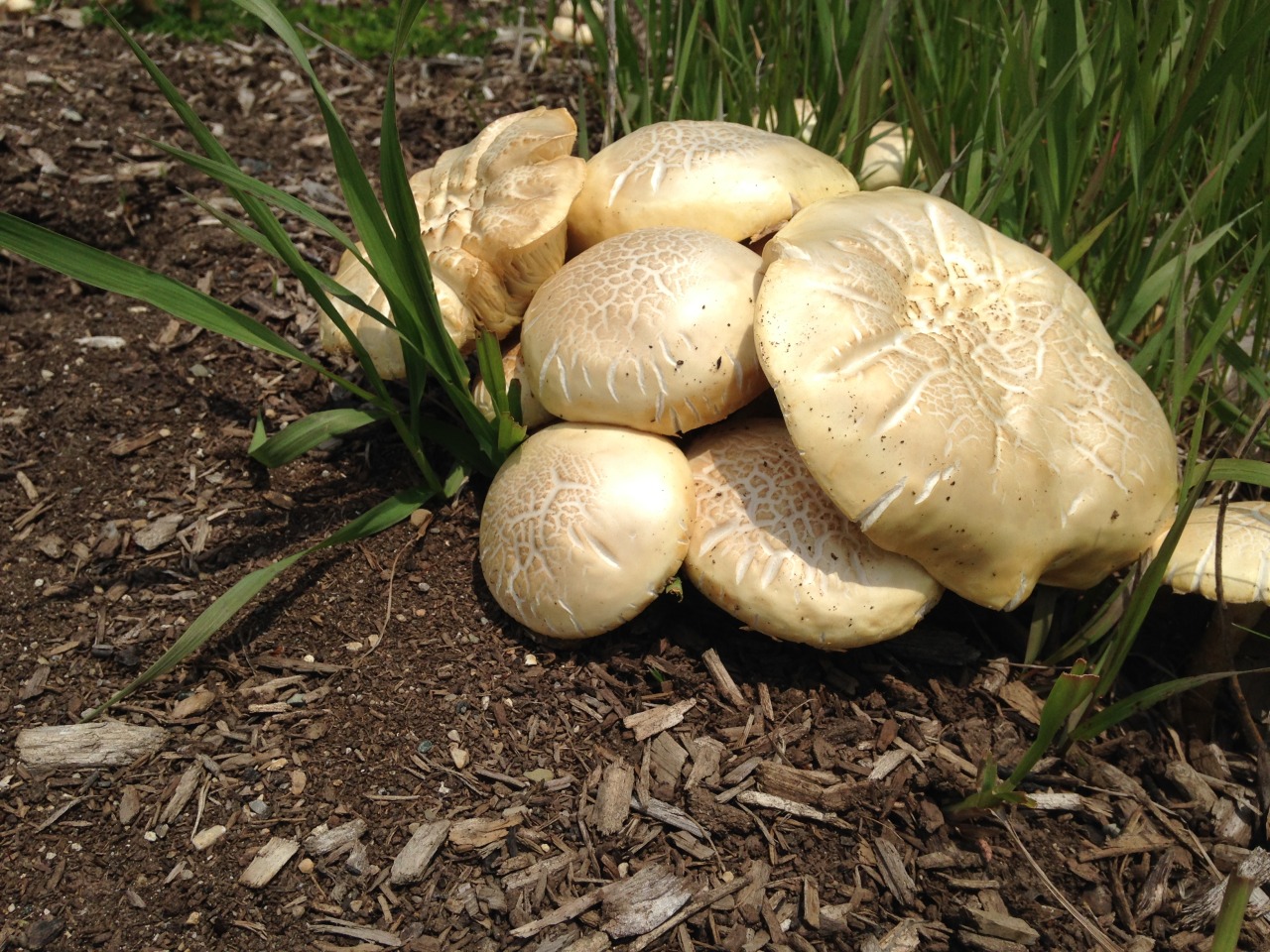
Solomon’s Seal
Scientific name: Polygonatum
Anishinabemowin name: naaniibide`oodegin
This family of native flowers produces red or black berries, and was once categorized in the family of lilies!
Fun Fact: Polygonatum is Greek for “many knees”, a name which refers to the Solomon’s seal’s many-jointed rhizome!
For more information, check out this webpage!

False Solomon’s Seal
Scientific name: Maianthemum racemosum
Anishinabemowin name: agongosi-jiibik
Make no mistake, this woodland perennial is NOT the same as yesterday’s post! The False Solomon’s seal grows in similar habitats to its distant cousin, but it produces flowers at its tip instead of along the stem.
Fun Fact: Young shoots of this plant can be cooked and eaten! Allegedly they have a taste similar to asparagus.
For more info, check out this website!

Shaggy mane
Scientific name: Coprinus comatus
Anishinabemowin name: wazhashkwedoons
What a fungi! This common mushroom can be found in all types of urban and rural habitats, especially after it rains.
Fun Fact: The shaggy mane is actually edible! But you have to eat it quick, because the gills and cap dissolve only hours after being picked!
For more information, visit this website!

Agrocybe Praecox
Scientific name: Agrocybe praecox
Anishinaabemowin name: wazhashkwedoons (mushroom)
This edible mushroom cluster is often found in urban settings, and the cracking cap is characteristic of this species.
Fun Fact: This species of mushrooms is incredibly hard to identify! The Matthaei interns found some growing in a compost pile, but couldn’t quite name it. Fortunately, our teammate Andrew Harmon is a certified mushroom identifier, and he was able to help us figure out just what this fungi was. Thanks, Andy!
For more info, check out this website!

Red-Tailed Hawk
Scientific name: Buteo jamaicensis
Anishinabemowin name: memeskoniniisi
KEE-EEE-AR! That’s the sound of the red-tailed hawk, a Michigan native that also lives all over North America. Eating mainly small rodents, it can dive at speeds up to 120 mph when hunting!
Fun Fact: The red-tailed hawk is often used in falconry because it is very social, trainable, and long-lived!
To hear the red-tailed hawk’s call, click here!
For more information, visit this website!
No comments :
Post a Comment